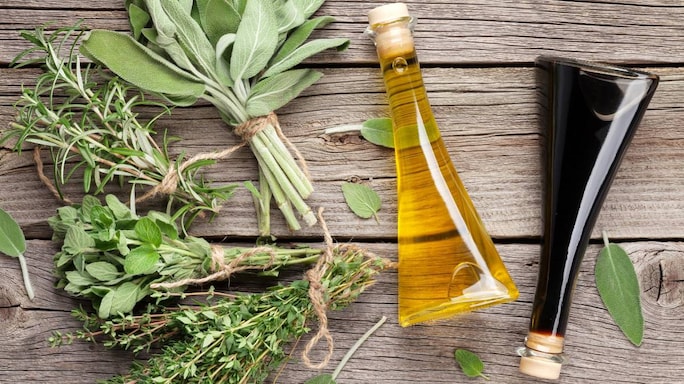- HOME
- /
- Better Living
- /
Know Your Vinegar: A Wonder Cooking Ingredient And An Effective Cleaning Agent
This guide on vinegar also lists five ways in which you can use vinegar, other than in cooking
 Photo: Shutterstock
Photo: Shutterstock
Vinegar and versatility go hand in hand. From cooking to cleaning, vinegar has many uses and that’s why it is a home essential. It is the acetic acid in vinegar that gives it the tangy flavour and the slightly pungent odour. Vinegar also contains trace vitamins, mineral salts and amino acids; distilled vinegar, however, doesn’t contain nutrients.
Types of vinegar
If you think there’s just one kind of vinegar, you can’t be more wrong. From white distilled and balsamic to rice, apple cider, and red and white wine vinegar, each one has a different flavour. Apple cider vinegar, for instance, is less acidic compared to the other varieties and is a popular choice for salad dressings and marinades.
If you are a fan of Asian cuisine—think stir-fry, sushi—then rice vinegar is an essential ingredient in your pantry. Made from fermented rice, this vinegar has a mild, sweet taste.
Balsamic vinegar is believed to have Italian origins and is dark and syrupy. “(It) is made with grape must (juice) that is simmered to make a concentrate, allowed to ferment, then, for a minimum of 12 years, matured in barrels of progressively decreasing size, made from different woods in order to impart different flavours,” says an article on BBC Good Food. You can use it to brush you chicken roast or add it to salads or pour a few drops on your vanilla ice cream.
Both red and white wine vinegar, as the names suggest, are made from wine. Red wine vinegar has more punch than white wine vinegar. Both can be used for salad dressings and for marinating chicken.
White distilled vinegar is the most basic and cost-effective option. It doesn’t have any overpowering flavour and is, therefore, preferred for pickling vegetables. It is often used for cleaning purpose too.
Non-cooking uses of vinegar
1. Your kitchen scissors have turned grimy? Don’t worry. Clean the blades with white distilled vinegar and then dry them with a towel or any cloth.
2. You have tried everything and your bathroom sink still looks dirty? Try scrubbing it with distilled vinegar and see the shine for yourself. It is also great for removing those mineral deposits from shower-heads.
3. Vinegar is also good for clothes. Your elders may have often told you to wash your clothes before wearing them for the first time to remove dust and odour. When you do that, just add a cup of distilled white vinegar to the wash cycle. You can also soak your coloured clothes in distilled vinegar for a few minutes so that the colours don’t run after the first wash.
4. Vinegar can help restore the shine of your old carpet. Dip your carpet brush or broom in a solution of distilled vinegar (one cup) and water (half-a-bucket) and then run it over your rug or carpet.
5. Vinegar has beauty benefits too. Apple cider vinegar, many believe, restores the pH balance of your scalp and fights dandruff. Mix equal parts water and apple cider vinegar in a small cup. Leave it on your scalp for 10-15 minutes and wash it off.






